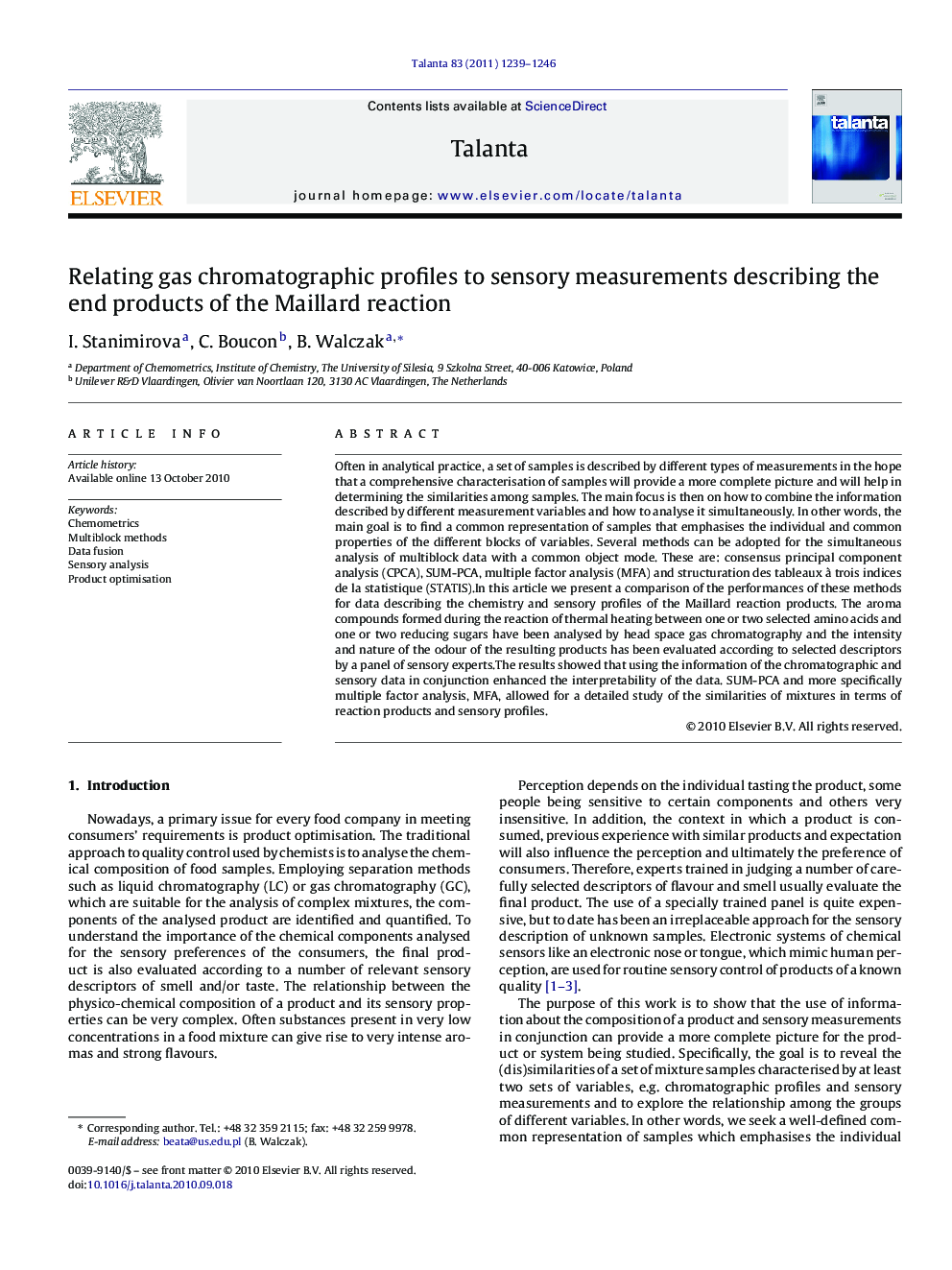| Article ID | Journal | Published Year | Pages | File Type |
|---|---|---|---|---|
| 10560691 | Talanta | 2011 | 8 Pages |
Abstract
Often in analytical practice, a set of samples is described by different types of measurements in the hope that a comprehensive characterisation of samples will provide a more complete picture and will help in determining the similarities among samples. The main focus is then on how to combine the information described by different measurement variables and how to analyse it simultaneously. In other words, the main goal is to find a common representation of samples that emphasises the individual and common properties of the different blocks of variables. Several methods can be adopted for the simultaneous analysis of multiblock data with a common object mode. These are: consensus principal component analysis (CPCA), SUM-PCA, multiple factor analysis (MFA) and structuration des tableaux à trois indices de la statistique (STATIS).In this article we present a comparison of the performances of these methods for data describing the chemistry and sensory profiles of the Maillard reaction products. The aroma compounds formed during the reaction of thermal heating between one or two selected amino acids and one or two reducing sugars have been analysed by head space gas chromatography and the intensity and nature of the odour of the resulting products has been evaluated according to selected descriptors by a panel of sensory experts.The results showed that using the information of the chromatographic and sensory data in conjunction enhanced the interpretability of the data. SUM-PCA and more specifically multiple factor analysis, MFA, allowed for a detailed study of the similarities of mixtures in terms of reaction products and sensory profiles.
Related Topics
Physical Sciences and Engineering
Chemistry
Analytical Chemistry
Authors
I. Stanimirova, C. Boucon, B. Walczak,
